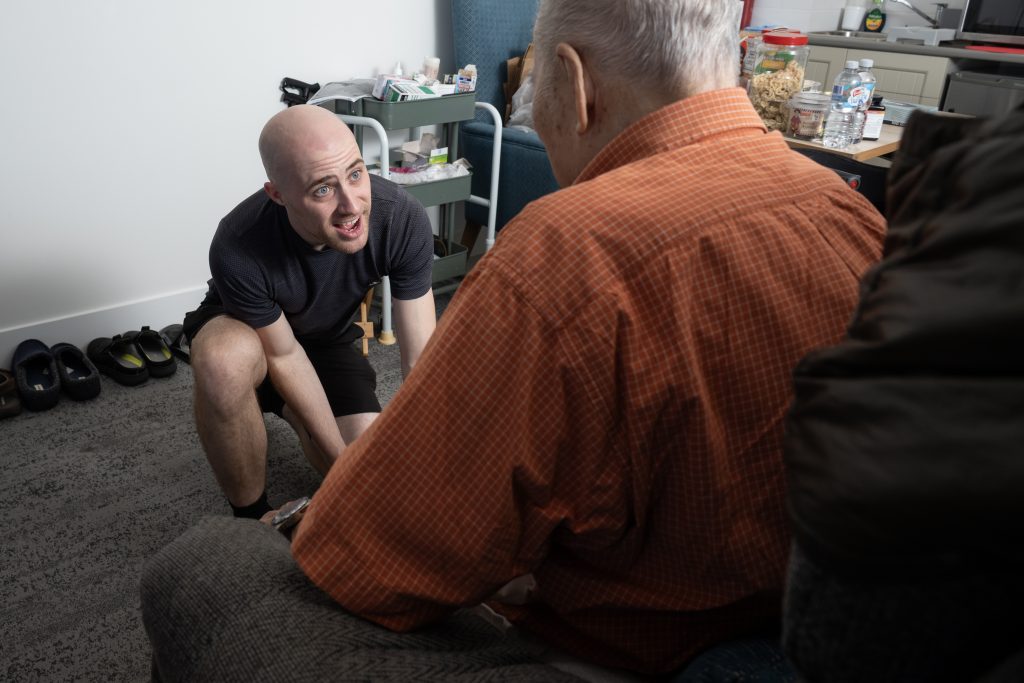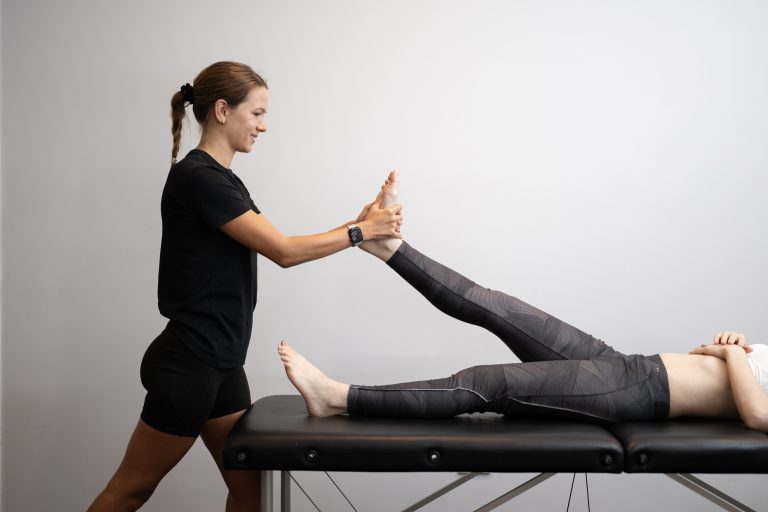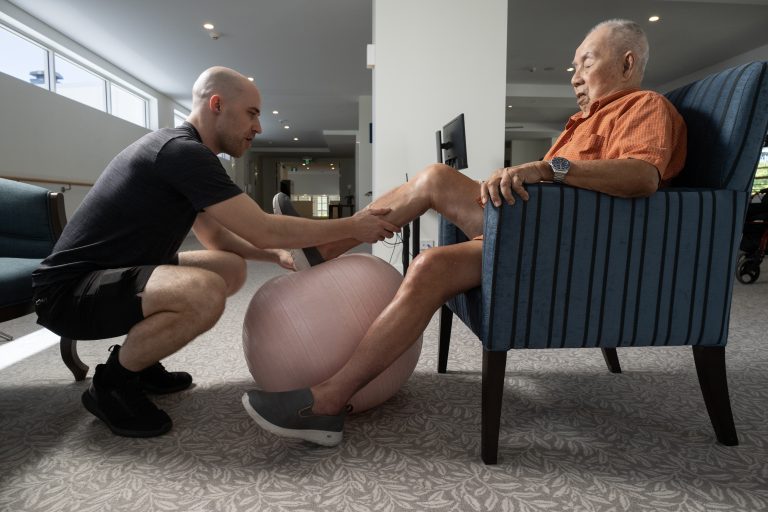Achilles tendinopathy is a prevalent issue that affects both athletes and non-athletes. Tendons connect muscle groups and bones, allowing us to move our limbs, which is essential for maintaining physical activity. They also give stability to joints like the ankle and knee. When they are harmed, they might cause issues within the tendon. Management of achilles tendinopathy can be treated with a variety of methods, including achilles tendon loading, and less often, surgery. Physiotherapists can assist patients in controlling their pain at the achilles and resuming regular physical activities.
What is Achilles tendonopathy?
The Achilles tendon is your body’s thickest and strongest tendon. It links the calf muscle to the heel bone, allowing you to move your foot while walking, climbing, jumping, or running.
Achilles tendinopathy is an injury to the Achilles tendon. Tendon injury is usually caused by overuse and prolonged stress to the tendon. A tear in the Achilles tendon might potentially be the cause.
Achilles tendinopathy can result from a single trauma or repetitive microtrauma, with the latter being the more typical cause. These injuries can be made worse by a lack of flexibility or a tight Achilles tendon. Pain and stiffness can be managed further with manual therapy. Usually an achilles tendinopathy diagnosis is marked by pain behind the heel, swelling behind the ankle, calf stiffness, which is usually greater in the morning, and difficulties in walking, jogging, and leaping.
What’s the distinction between Achilles tendonitis and Achilles tendonopathy?
There are stages of tendinopathy. Achilles tendinopathy is commonly misnamed Achilles tendonitis, although they represent different stages of tendon pain. Although the symptoms are remarkably comparable, they do not represent the same illness. Tendinopathy is caused by the breakdown of the collagen protein that forms the tendon, often leading to conditions like tendinosis. In contrast, tendonitis, often referred to as Achilles tendinitis, is caused by inflammation of the tendon. This inflammation causes pain and reduces the strength of the tendon. These must be carefully managed to prevent a chronic tendinopathy from forming.
Common symptoms of Achilles tendinopathy
- Heel discomfort – This might be an aching or a sharp pain that escalates when you move or apply pressure to it.
- Tendon stiffness is typically worse first thing in the morning or after a time of rest.
- Your ankle is swollen on the back, which may indicate a need for treatment of Achilles tendinopathy.
- When you touch your tendon, you will experience soreness, a common symptom associated with tendon pain.
- When you move your ankle, you may notice a grating noise or a cracking sensation (crepitus).
If you feel abrupt pain in your heel or calf, you may have ripped a tendon, which could lead to tendinosis. This is known as an Achilles tendon rupture. You may hear it shatter and experience difficulties bearing weight on your leg. If this happens, seek emergency medical treatment.
Which therapy is most beneficial for Achilles tendonopathy?
Your physiotherapist should always lead you through an exercise program and activity adjustment when managing achilles tendinopathy. This program will include all kinds of treatment for tendinopathy, from sedentary to rapid, short to long, light to heavy, and isolated to functional. Massage, orthotics, joint mobilisation, electrotherapy, and dry needling may all be used as part of your physiotherapy rehabilitation program.
Achilles tendonopathy diagnosis
Your physiotherapist will go over your medical history with you and thoroughly evaluate your heel, ankle, and calf, evaluating your foot posture, flexibility, strength, and mobility. This method may involve seeing you stand in a relaxed posture, stroll, squat, step onto a step, or do a heel lift. Other aspects of your leg’s movement and strength will also be assessed. An examination of pain is also very important when customising your exercise rehabilitation programme. Pain may influence the type or volume of load that you can tolerate through your achilles.
Your physiotherapist may also question you about your everyday activities, workout habits, and footwear in order to find other variables contributing to your issue.
Imaging methods such as MRI are commonly used in sports medicine to determine the degree of Achilles tendinopathy.
How long does Achilles tendonopathy last?
Tendinopathy rehabilitation involves numerous stages, each of which might take weeks or even months to recover, often requiring a comprehensive treatment plan. After 12 weeks of physiotherapy exercises, most people have improved pain and mobility. While some people require further therapies (as described above).
Recovery is determined by the severity of the injury, the amount of physical activity desired, and the tissue’s response to tendon pain.
Final views on physiotherapy for Achilles tendinopathy.
Physiotherapy is an excellent treatment for Achilles tendinopathy, since it can lower discomfort while also improving flexibility and range of motion through targeted eccentric exercise.
If you’re suffering from this problem, don’t give up; physiotherapy can help you feel like yourself again!
Achilles Tendon Treatment and Physiotherapy Management with GM Physiotherapy
At GM Physiotherapy, we bring quality physiotherapy services directly to your doorstep. Our mobile service makes it easy to receive the care you need, wherever you are. We support clients of all ages with issues like pain, mobility challenges, balance concerns, and recovery from injury or surgery.
Our experienced physiotherapists work closely with you to understand your unique goals and needs. Whether you’re aiming to stay active, manage a chronic condition, or recover from an injury, we customise each session to help you achieve the best results.
Our process starts with a thorough assessment to identify areas of pain, stiffness, and movement challenges. From there, we develop a personalised treatment plan designed specifically for you. This may include gentle exercises, hands-on therapy, and practical advice to keep you moving comfortably every day.
We know how important it is for clients to feel independent, confident, and empowered. That’s why we focus on small, achievable goals that make a big difference in your daily life, whether it’s reaching for items, walking steadily, or simply moving with less discomfort.





 Back to all posts
Back to all posts

